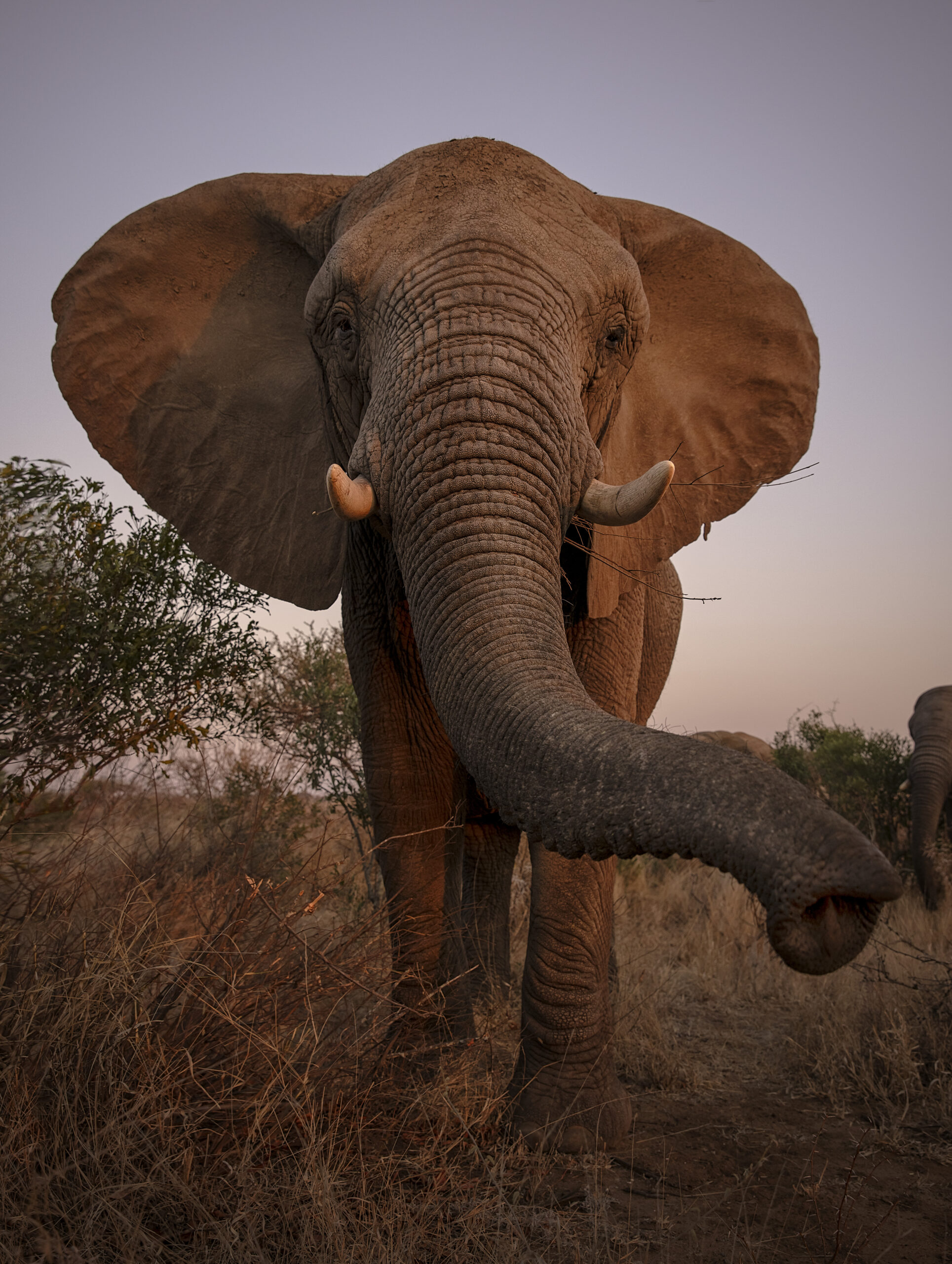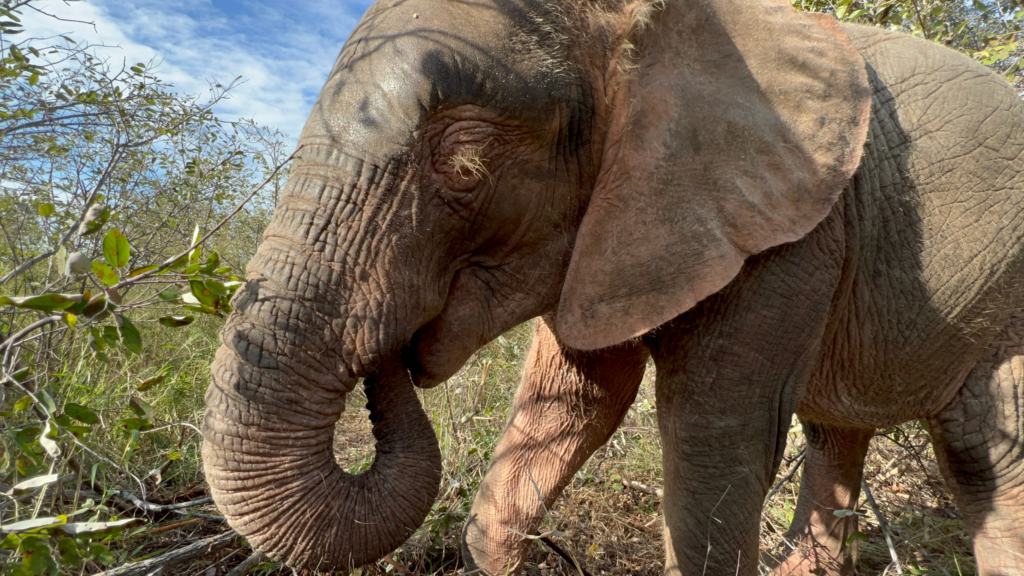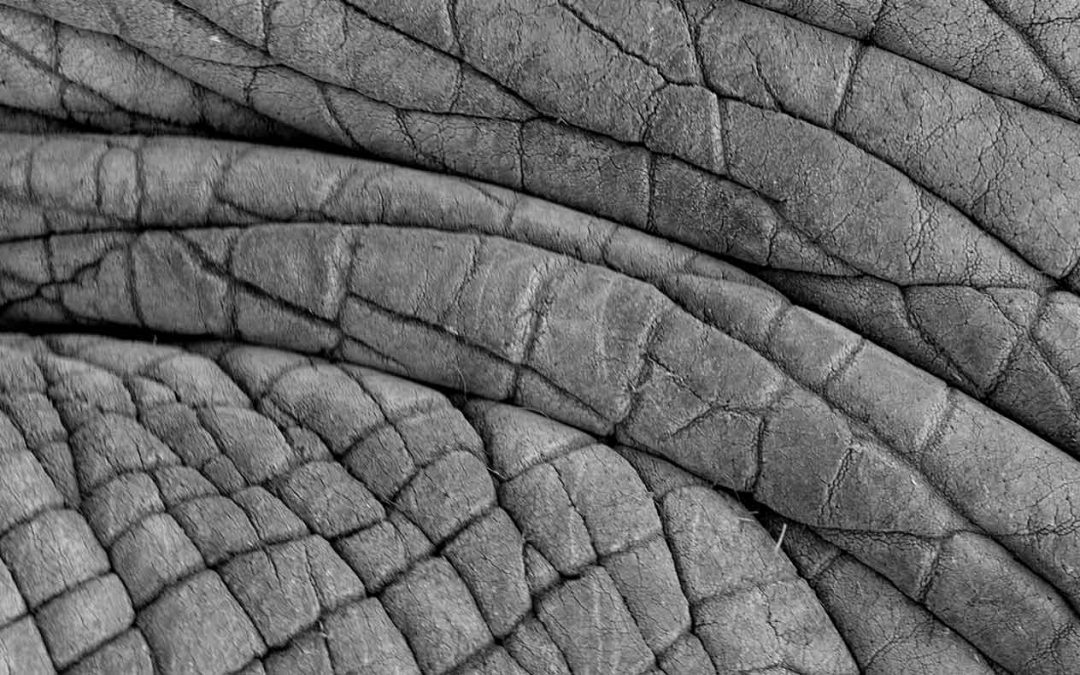HERD Operations Manager, Juan Ferreira shares some insight into elephants and their impact on the environment.
Elephants are considered as ecosystem engineers, sculpting the landscape they move through and creating microhabitats for smaller mammals and invertebrates as well as facilitating much needed plant diversity.
As the Jabulani elephant herd and wild elephant herds in the reserve continue to grow in size, with new calves, and considering that elephants live to more than 60 years of age, we have to consider the environment and whether it can continue to hold them all.
A happily grazing Limpopo in May 2021
Managing the environment and wildlife populations is vital to ensure harmony and a thriving and sustainable wilderness. As the Jabulani rescued herd can’t be more than a few hours walk away from the central homestead where they reside at night, there have been a few challenges that have arisen.
Elephants are generally referred to as ecosystem engineers, because of the significant role they play in modifying and shaping the landscape. They often push over and uproot trees and these decomposing trees, in turn, create a new habitat for small mammals and thousands of insect species. Elephants strip trees of their bark – after which the tree usually dies. In these ways, they clear areas that are overgrown with thick strands of encroaching small trees, making these areas more accessible to other animals.
During this clearing event, the surface of soil will be littered with small branches. These scattered branches, along with the elephant dung, create a microhabitat ideal for seed germination. As elephants travel, they spread seeds all over, often introducing much-needed plant diversity in previously mismanaged areas.
Elephants are a big part of the reason that we see vast and open landscapes filled with perennial grass communities and large trees dotting this landscape.
However, because of factors such as the limited size of our herd’s home range, previous agricultural activities and selective overgrazing, the land is vulnerable to degradation.
We have a holistic Environmental Management Plan at HERD and Jabulani to help the environment considering these threats to it. The plan works to rehabilitate the affected areas and protect them from degradation in the future, keeping in mind the ever-increasing size of the herd.
The management plan includes, but is not limited to, techniques for combatting large erosion networks to prevent the loss of valuable topsoil, planning and revising road networks and associated infrastructure and, most importantly, techniques that will revive the basal grass layer essential for ecosystem well-being.
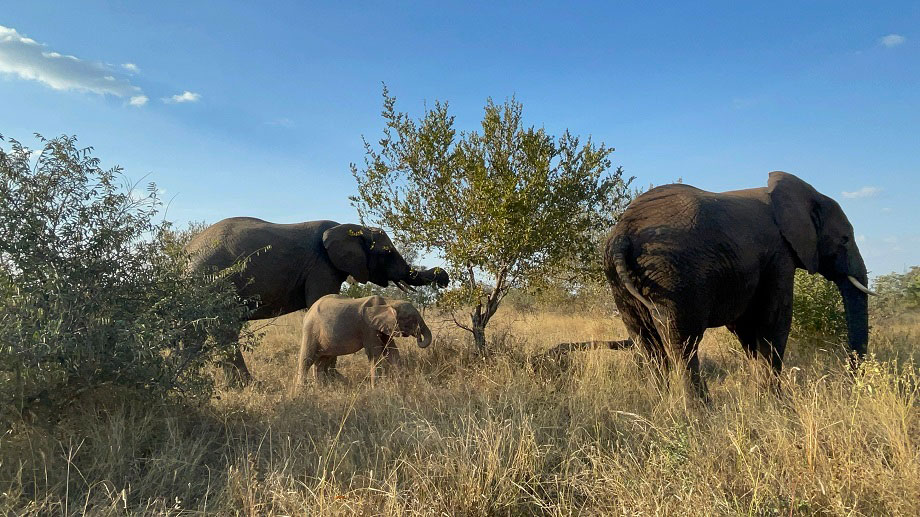
The plan also includes strategies to protect too many existing large trees from being pushed over by the herd. The remaining community of large trees are critical for the functioning of core ecosystem services such as the hydrological cycle, pollination, micro-habitats for smaller members of the ecosystem and simply, to shade animals from the sun.
In these ways we are working to create an environment that can truly sustain not only this herd of flagship species but also every other member of this complex and ever-changing ecosystem.
It’s difficult to picture these results, and how elephants along with other animal forms of bush encroachment control their environment.
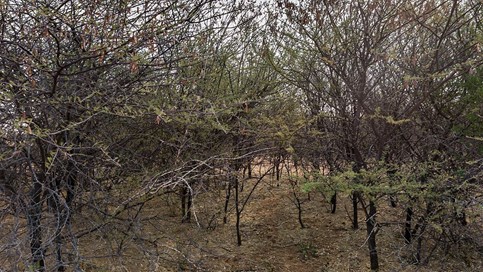

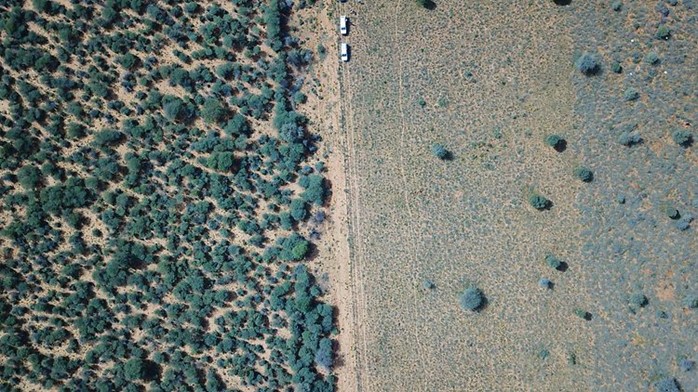
Successful ecosystem management within fenced reserves is achieved by a combination of biological and mechanical methods. One other biological control factor is the use of controlled fire, as fire is natural part of the African ecosystem.
Wildlife managers have been taught to use fire as a veld management tool. This sounds quite bizarre, as fire is often thought of as being destructive. But there is very little emphasis on post fire renewal. Veld fires inhibit the growth of woody plants responsible for bush encroachment and stimulates the herbaceous (grass) component of the plant community. Post-fire growth, often referred to as super bloom, creates fresh grazing for animals and replenishes much needed soil nutrients.
It often requires that people step in with mechanical ecosystem engineering. This takes place in the form of selective bush clearing. Where clumps of trees are thinned out and the trees along with their branches are cut and tightly packed onto soil that has been prepared by ripping and seeding. It is often this combination between biological and mechanical ecosystem engineering that the best results are achieved.



 Comment
Comment

